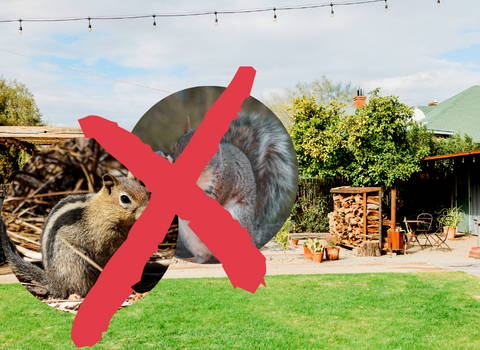Chipmunk Live Trap: What Traps to Get and Maximizing Its Effectiveness
Once you notice that there is chipmunk tunnelling activity under a sidewalk or driveway or notice burrow openings near your house’s foundation, you should immediately start taking control of this. The damage that these activities do will cost you a lot, so you should act quickly and get your traps ready.
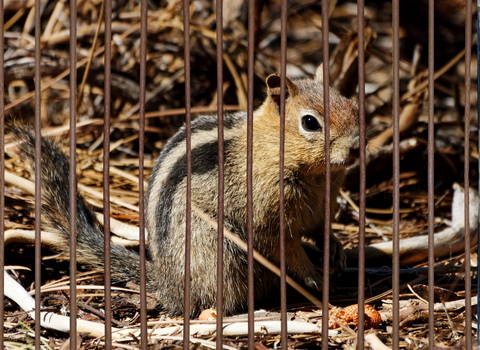
Fortunately, it is very easy to trap chipmunks. You just need to make sure that you locate their dens as well as their normal travel routes. It is also important that you use a sturdy live trap when catching chipmunks to prevent them from escaping and release them somewhere far from your home.
Chipmunk Live Traps from Pestsupplycanada.ca
Live traps are among the best and most humane solutions when catching chipmunks. Some of the highly recommended traps that you can try are:
Easy Set Chipmunk Trap 16x6x6
Lorem ipsum dolor sit amet, consectetur adipiscing elit, sed do eiusmod tempor incididunt ut labore et dolore magna aliqua. Ut enim ad minim veniam, quis nostrud exercitation ullamco laboris nisi ut aliquip ex ea commodo consequat. Duis aute irure dolor in reprehenderit in voluptate velit esse cillum dolore eu fugiat nulla pariatur. Excepteur sint occaecat cupidatat non proident, sunt in culpa qui officia deserunt mollit anim id est laborum.
Chipmunk Trap - 1 Gravity Action Door
This is best used for trapping chipmunks, squirrels, rats, weasels, flying squirrels, and voles. The gravity-action guillotine door is secured enough to prevent chipmunks from escaping. It is constructed using galvanized steel which guarantees sturdiness and rust resistance.
Animals cannot easily outsmart it as it is designed to catch and trap any small rodent. It has a trigger plate that is sensitive enough that even the slightest touch can trigger the door to close. The trap also has smaller mesh openings, which ensures that critters will not steal the bait.
It guarantees safety for you and the caught animal as it has a handle guard and solid door that will protect you from getting in contact with the animal. For the animal, it has a strong door lock that keeps the caught animals safe inside. It also has smooth and rolled internal edges that prevent injuries to the animal while being transported or as they are trying to escape.
Mouse Trap 2 Gravity Doors 10x3x3
An alternative for chipmunk traps that you can use is this mouse trap. This is a two-door trap where a chipmunk can also fit. Like other Havahart products, this cage trap also has rolled internal edges and is smooth enough to prevent injuries from happening to the caught chipmunk during transport.
The two doors provide the animal with a clear line of sight, which ensures a higher catch rate. All materials used in the traps are premium and rust-resistant and will surely last long.
It can capture even the smallest animals and the mesh openings are small enough to let other animals from stealing the bait or letting animals escape once trapped. This is also designed with secure door locks to ensure that the animal will not be able to go out of the cage.
Trapping using this one is easy. You just must follow the instructions on the product label. The 2 doors allow the animal from entering the trap from both directions and has sensitive triggers that guarantee a higher catch rate that is secure and quick.
Make sure that you have checked the local laws in your area before trapping and releasing animals trapped in your yard or property.
How to Improve the Effectiveness of Your Chosen Chipmunk Live Trap
There are things that you must do first before you can set up your chosen chipmunk live trap and make it more effective when trapping these rodents.
Identification
Before you use a chipmunk live trap, you must know that the wild animals that you are trapping are chipmunks. This will help you determine the correct use of bait as well as the strategies that you must consider using.
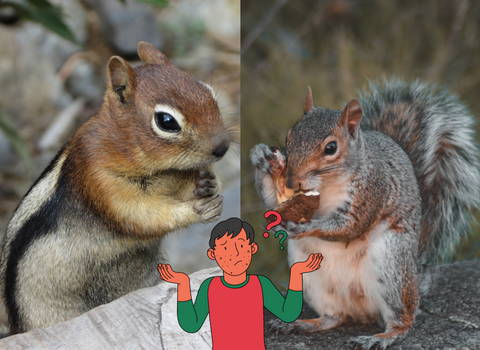
Inspection
It is important that you also know the areas where these animals are most active. This is where you should place your traps. Some of the areas where you should inspect are areas near shrubbery and trees. These animals are most likely searching for a place they can stay in your shelter.
Some of the things that you must look for:
Search for disturbed areas in your garden or yard.
Chipmunks love to burrow and dig holes to create a shelter. These holes can also be used for nesting and resting.
You should also look for visible chipmunk tracks. These tracks will usually look like tiny hands with five toes on the hind feet and four toes in the front.
When you found these signs, you can then proceed with the treatment strategy that you choose. In this case, the use of live traps to capture these rodents.
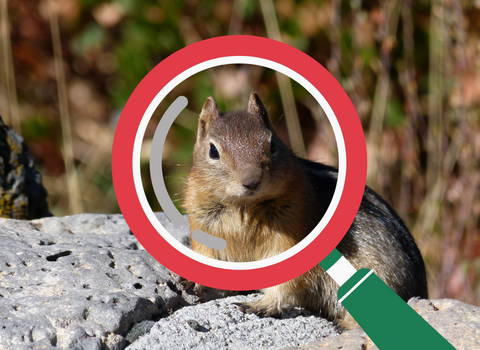
Proper Placement of Chipmunk Live Traps
When placing the live traps on the active places that you have identified, make sure that you wear gloves when handling them to avoid leaving human scent. If the animals smell your scent on the trap, they will surely avoid it and make it ineffective.
The following are things that you should do to make your live trap placement work:
Remove all food sources
Proper bait placement will not work effectively if there are other food sources around it. Make sure that trash bags are sealed and are inside trash bins with tight lids on them. You should also move your pet food, and water bowls inside once your pets are done eating. It is also recommended that you temporarily get rid of your bird feeder or bird feeders if you have several pieces of them set around your garden. Spilled seed can also attract chipmunks to your property.
Properly position traps around your property
Make sure that you always place the traps on an even surface as chipmunks might knock or push over the trap when they try to reach the bait in the trap. You can place something heavy on the top of the trap like a brick to prevent this from happening.
Baiting and setting the tarp
The chances of catching chipmunks increases when you use the proper bait. These animals are fond of eating nuts. However, peanut butter is the most effective bait to use as chipmunks will not east take the bait and run away with it.
Make sure that you place the bait near the back part of the trap. This way, the chipmunk will enter the trap, step on the trigger plate, reach the food, and get caught inside.
Set the trap according to the instructions on its label. You must follow this to make sure that it will immediately close once the chipmunk enters and grab the bait.
Monitoring the live trap
Make it a habit to check on the traps that you placed around your property. This way, you can immediately get rid of the trapped chipmunks. Never keep the animal trapped for more than 24 hours.
Relocating trapped chipmunks
When releasing or relocating chipmunks, see to it that you have checked on the local authorities and know about laws regarding wildlife relocating. When approaching the trap, speak softly and place a fabric or towel to avoid scaring the animal. Once you have reached a place farther from your house, you can open the trap carefully and release the animal.
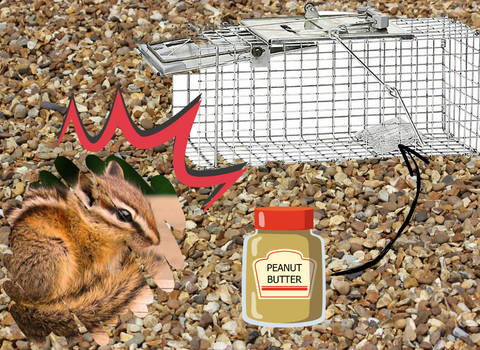
Preventing Chipmunks from Coming Back
There are a few things that you need to do to make sure that these animals do not come back to your property or minimize their presence on your property.
Always keep your property clean. Get rid of debris and clutter around your property as clutter lure these animals to burrow and nest in these areas.
Always keep your trash bins closed tightly and get rid of areas that may retain water. These are potential water or food resources.
Close and seal all possible entryways of these animals inside your house. Check your home for possible entryways and fix and seal them close.
Exerting extra effort in doing these things will help in keeping your live traps effective to remove chipmunks and prevent them from coming back.
